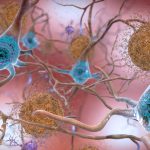by: Quinn Spencer
Did you know that there are more bacterial cells in your body than there are human cells? It has long been known that these bacterial associations play an important role on human health (probiotics anyone?), but the Eisen Lab at UC Berkeley has recently begun research that looks further into how these relationships may affect host organisms.
Carolyn Elya, a graduate student researcher in the Eisen Lab, has undertaken research to understand if bacterial associations affect gene expression in the host organism, and if so, what the molecular basis of these changes is. Her hypothesis was that different bacterial cultures in the guts of fruit flies, Drosophila melanogaster, could have an effect on the gene expression of these organisms, indicating that bacterial associations have even greater health implications than currently realized.
Studies that involve genetic research often use fruit flies, a model organism in the scientific community. They are a particularly good organism for this study because they reach maturity and reproduce quickly, making it quick and easy to see any differential changes in adult organisms or females’ offspring. They also have a low number of chromosomes and a small genome size, making it efficient to track changes. Studies have involved fruit flies for decades, which means there are a plethora of mechanisms that researchers have to test and analyze results accurately.
The rich understanding of fruit flies made it so that the research could focus on the molecular basis of bacterial associations. In D. melanogaster, the typical microbe community is comprised of about 50 bacterial species in wild flies and about ten species in lab-reared flies. To strip these in lab flies, a combination of house bleach and sterile conditions was used to raise axenic flies. This allowed for the mono-association of certain bacterial colonies with D. Melanogaster. Three different bacterial strains were used to compare, chosen for their high abundance in lab stocks, and general ubiquity in gut microbe surveys.
Following the rearing of flies on mono bacterial cultures, five-day-old female adult flies were tested for genetic expression via gut dissection and the mRNA found in these regions was sequenced. Female flies were chosen due to higher genetic content that is expressed as compared to male flies, as there is a large concentration of maternal RNAs found only in females, which affect the development of their embryos. In this original experiment, researchers were surprised to find that they did not find any significant differences in gene expression based on bacterial treatment, using ANOVA statistical testing.
Finding this result unsatisfying, the researchers expanded their research to compare axenic flies with conventionally reared flies and flies mono associated with yeast, which provides nutrition to flies without bacteria. Following the testing protocol of the first experiment, researchers once again compared results. They found two distinct groups of patterns of gene expression. One transcriptional regime was ‘conventional like,’ which included the conventionally raised flies and the flies raised on yeast with bacterial mono or poly associations. The other regime was ‘bacterial like,’ similar to the expression patterns found in the three groups of the initial experiment. The axenic groups and simple bacterial mono and poly associations fell into this group. Using ANOVA, researchers were able to understand which genes most distinguished these two groups. Genes more highly expressed in the ‘conventional like’ group were enriched for annotations for a variety of metabolic processes, most notably involving lipids and amino acids. Genes more expressed in the ‘bacterial like’ group were also enriched in metabolism annotations, although this enrichment was less pronounced and more general than for the former set. The takeaway from these results is that yeast induces metabolic changes which are not evoked by the presence of any one bacterial colony.
A further experiment following the unexpected results from the original analyzed the genome of the entire organism instead of just focusing on the gut. Data from whole organisms showed that the conventionally raised flies had a distinct profile compared to the other samples tested. This suggests that none of the treatments done in these experiments could recapitulate, meaning yeast alone with bacterial associations is sufficient for gut gene expression, but not so for the whole organism. There were no significant differences in whole organism transcription profiles when comparing the different mono-associated organisms.
Altogether, this research helped confirm that the presence of microbes in food and the environment has a significant effect on gene expression in the gut of D. Melanogaster. Though there were few differences seen between organisms raised on monocultures, the presence of yeast played a large role, indicating that this may be what has a more significant effect on shaping physiology.
Carolyn Elya claims that these results were unexpected, and it is important not to jump to the conclusion that flies are insensitive to bacterial associations. Some things to take into consideration, she states, are that “bacterial species that thrive amongst lab-reared flies are not representative of natural populations” and that some of the bacteria used in this research came from non-fly species. Also, these experiments only looked at five-day-old flies, leaving for the possibility that experimenters may have “missed a critical period for interactions.” For example, these associations may have been more important in development and thus different expression patterns would be prominent in younger organisms.
These are all avenues that could lead to further experimentation. To date, the molecular mechanisms of how different bacterial associations in organisms may affect host physiology are still somewhat unknown. While these results were not what was expected, researchers now know that is is not a direct effect on gut gene expression that is responsible for changes based on microbe composition.






